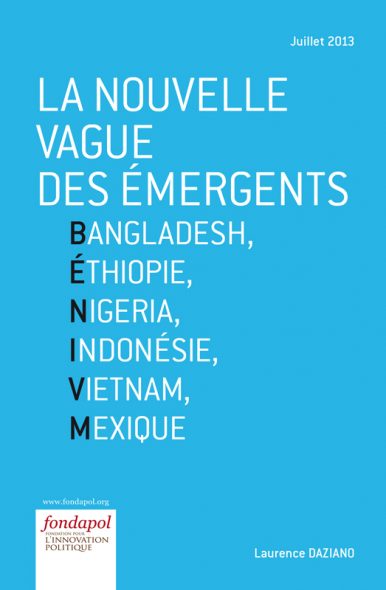European Court of Human Rights Finds Russia Responsible for Grave Violations in Ukraine
Overview of the ECHR Ruling
On Wednesday, the European Court of Human Rights (ECHR) issued a landmark ruling holding Russia accountable for serious breaches of international humanitarian law (IHL) in Ukraine. This decision arose from consolidated complaints filed by Ukraine and the Netherlands concerning events since the onset of the conflict in 2014.
Key Violations Identified
- International Humanitarian Law Breaches:
- Crash of Malaysia Airlines Flight 17 (MH17)
- Multiple violations of the Geneva Conventions and other human rights treaties
- Application of extremism laws against religious communities
- Interference with freedom of speech and the press
- Violence and Torture:
- Use of violence against detainees, including torture and ill-treatment
- Inhuman detention conditions
- Systemic sexual violence by armed separatists and Russian troops, including rape as a weapon of war
- Forced Labour and Abductions:
- Administrative practice of forced labour, including dangerous demining work
- Abductions, kidnappings, arrests, and unlawful detentions
- Unlawful displacement of civilians
- Military Aggression:
- Responsibility for various aircraft attacks
- Downing of MH17 resulting in 298 fatalities
Context of the Conflict
In 2014, Russia invaded and annexed Crimea following Ukraine’s Revolution of Dignity. This annexation was widely condemned internationally as a violation of international law, with Russia being the sole nation to recognize it. Since then, Ukraine has experienced:
- Crimes against humanity
- Forced displacements of civilians
- Crackdowns on LGBTQ+ protests
- Drone attacks targeting civilians
Implications for Sustainable Development Goals (SDGs)
The ECHR’s findings highlight critical challenges related to several Sustainable Development Goals, including:
- SDG 16 – Peace, Justice, and Strong Institutions: The violations undermine the rule of law, human rights, and peaceful societies.
- SDG 5 – Gender Equality: The use of sexual violence as a weapon of war severely impacts gender equality and women’s rights.
- SDG 3 – Good Health and Well-being: Torture, ill-treatment, and forced labour jeopardize physical and mental health.
- SDG 10 – Reduced Inequalities: Discrimination and crackdowns on minority groups exacerbate social inequalities.
- SDG 11 – Sustainable Cities and Communities: Forced displacement disrupts communities and urban stability.
Legal and Political Developments
- Russia was expelled from the Council of Europe in 2022 but remains subject to ECHR jurisdiction for violations before September 16, 2022.
- This ruling marks the first instance of an international tribunal holding Russia accountable for human rights abuses in Ukraine.
- The Kremlin has rejected the ECHR decisions, declaring them “null and void.”
Conclusion
The ECHR’s decision underscores the urgent need for accountability and adherence to international humanitarian law to promote peace, justice, and human rights in line with the Sustainable Development Goals. Continued international attention and action are essential to address the ongoing humanitarian crisis and support Ukraine’s path toward sustainable development and stability.
1. Sustainable Development Goals (SDGs) Addressed or Connected
- SDG 16: Peace, Justice and Strong Institutions
- The article discusses violations of international humanitarian law, human rights abuses, and the role of the European Court of Human Rights (ECHR) in holding Russia accountable.
- Issues such as torture, forced labor, unlawful detention, and violations of freedom of speech are central to SDG 16.
- SDG 5: Gender Equality
- The article highlights the use of sexual violence as a weapon of war, including rape and torture, which relates to gender-based violence and the need to eliminate violence against women and girls.
- SDG 10: Reduced Inequalities
- Forced displacement and crackdowns on minority groups such as LGBTQ+ communities are mentioned, connecting to the goal of reducing inequalities and protecting vulnerable populations.
- SDG 3: Good Health and Well-being
- The article references torture, ill-treatment, and inhuman conditions of detention, which affect physical and mental health.
2. Specific Targets Under Those SDGs Identified
- SDG 16: Peace, Justice and Strong Institutions
- Target 16.1: Significantly reduce all forms of violence and related death rates everywhere.
- Target 16.3: Promote the rule of law at the national and international levels and ensure equal access to justice for all.
- Target 16.2: End abuse, exploitation, trafficking and all forms of violence against and torture of children (implied by references to torture and violence).
- SDG 5: Gender Equality
- Target 5.2: Eliminate all forms of violence against all women and girls in public and private spheres, including trafficking and sexual and other types of exploitation.
- SDG 10: Reduced Inequalities
- Target 10.3: Ensure equal opportunity and reduce inequalities of outcome, including by eliminating discriminatory laws, policies and practices.
- SDG 3: Good Health and Well-being
- Target 3.4: Promote mental health and well-being (implied by the impact of torture and ill-treatment).
- Target 3.8: Achieve universal health coverage, including access to quality essential health-care services (implied by the need to address health impacts of conflict and detention).
3. Indicators Mentioned or Implied to Measure Progress
- Indicators for SDG 16
- 16.1.1: Number of victims of intentional homicide per 100,000 population, by sex and age (implied by references to deaths caused by attacks and MH17 downing).
- 16.3.1: Proportion of victims of violence in the previous 12 months who reported their victimization to competent authorities or other officially recognized conflict resolution mechanisms (implied by ECHR rulings and legal proceedings).
- 16.2.1: Proportion of children aged 1-17 years who experienced any physical punishment and/or psychological aggression by caregivers in the past month (implied by references to abuse and torture).
- Indicators for SDG 5
- 5.2.1: Proportion of women and girls aged 15 years and older subjected to sexual violence by persons other than an intimate partner in the previous 12 months (directly related to the article’s mention of sexual violence as a weapon of war).
- Indicators for SDG 10
- 10.3.1: Proportion of population reporting having personally felt discriminated against or harassed in the previous 12 months on the basis of a ground of discrimination prohibited by international human rights law (implied by crackdowns on LGBTQ+ protests and forced displacement).
- Indicators for SDG 3
- 3.4.2: Suicide mortality rate (implied by mental health impacts of torture and ill-treatment).
- 3.8.1: Coverage of essential health services (implied by the need to address health consequences of conflict and detention conditions).
4. Table of SDGs, Targets, and Indicators
| SDGs | Targets | Indicators |
|---|---|---|
| SDG 16: Peace, Justice and Strong Institutions |
|
|
| SDG 5: Gender Equality |
|
|
| SDG 10: Reduced Inequalities |
|
|
| SDG 3: Good Health and Well-being |
|
|
Source: jurist.org






